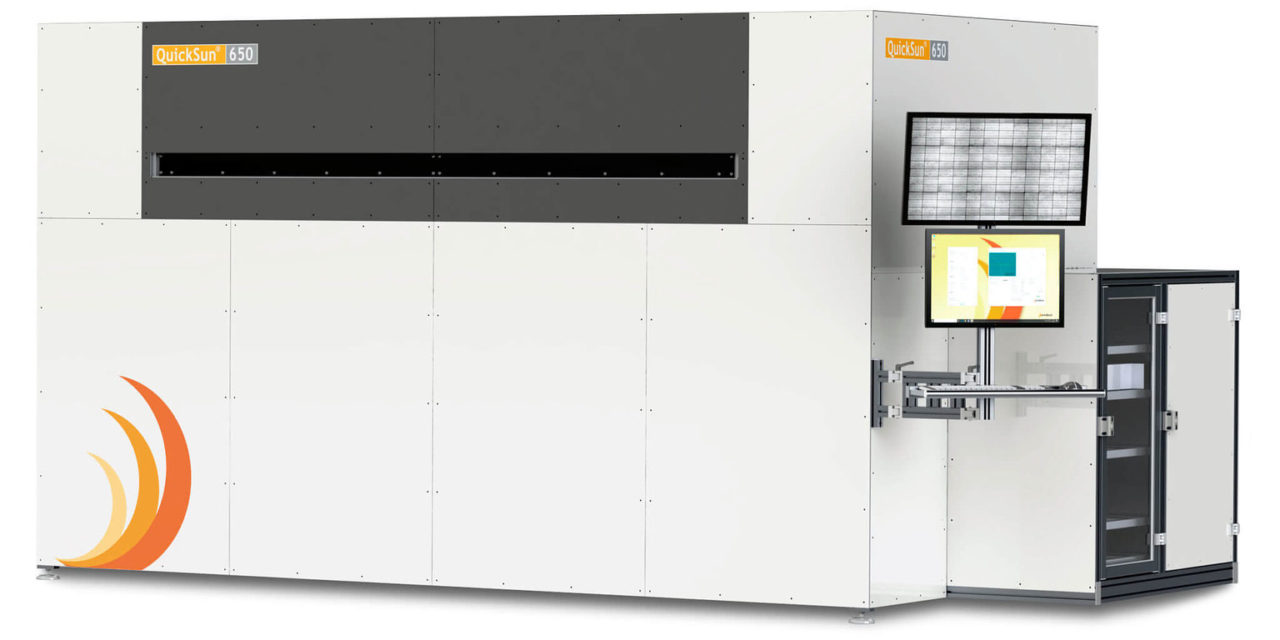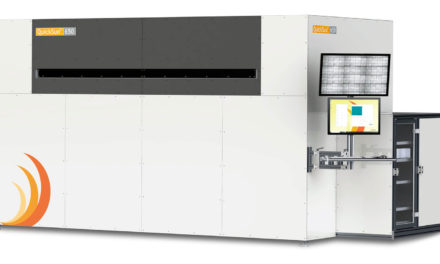- QuickSun 650 production–scale flasher from Endeas accomplishes several testing procedures – I–V testing, EL imaging, Hipot, and bypass diode functionality – in a single platformin less than 24 second cycle time
- The R&D variant of the system can accomplish the temperature coefficient in addition
- QuickSun Vision, the AOI inspection system automatically finds a long list of visual defects
Endeas, a Finland-based PV characterization expert, pitched its latest solutions at the recently held Intersolar India 2024 exhibition. The company promoted a module flasher for production and R&D-level I–V characterization devices, along with an automatic optical inspection (AOI) station, all under the QuickSun brand.
Production scale
QuickSun 650 is the latest of the series promoted for commercial production. In addition to I–V, the tool is equipped to accomplish other important characterizations such as EL, IR, ground continuity, and bypass diode functionality in a single platform.
The tool is integrated with A+A+A+ class (IEC 60904-9 Ed.3) sun simulator. The standard deviation of <0.1% in measurement repeatability ensures the best value of module output power, claims the company. The system is based on a xenon lamp illumination source. While the light source has a 750,000-flash warranted life span, the light source typically lasts for over a million flashes, according to Endeas. The module flasher, with an integrated and proprietary capacitance compensation (CAC) method facilitates characterization of the module based on high-capacitance cell technologies such as HJT, TOPCon, and IBC with the optimized length of the flash pulse. The IV tester also supports the characterization of bifacial modules.
Coming to the EL part, the tool supports 200 to 250 µm/pixel imaging resolution. When equipped with an optional AI algorithm and sorting software, the testing platform from Endeas can automatically detect and sort modules with microcracks at the final quality control (FQC) level. In addition, its optional bypass diode functionality testing according to IEC 61215-2 checks the polarity and health of the bypass diodes glued inside the junction box pottant.
The QuickSun 650 can also be configured for a complete in-line module electrical safety testing compliance according to IEC 61730. In its full configuration, the tool accomplished all these testing procedures – I-V testing, EL imaging, Hipot, and bypass diode functionality – all in a single platform that too in a cycle time of less than 24 seconds, which translates into an hourly throughput of about 150 modules/hour.
Characterization: R&D level
Along with products for mass production, Endeas also offers an R&D tool also under the QuickSun range called QuickSun 650Lab series. Built on the same platform as the above tool, this manually operated lab tool integrated with same hardware – A+A+A+ sun simulator and EL camera with 200 µm/pixel resolution.
The device with integrated I-V and EL imaging capability can measure modules with dimensions up to 140 x 270 cm2 in a cycle time of less than 5 seconds. It also comes with optional add-on features like the bypass diode test and electrical safety test, but has the extra ability to accomplish temperature coefficient measurement. The tool comes handy especially when the module makers are evaluating different BOM combinations during new product development. The full version with ability to execute all the characterization techniques (including the optional) requires a measurement time of <10 seconds. Endeas is also offering a lab tool for cell–level characterization called QuickSun 130E. This compact table-top cell tester with optional EL, has an active test area of 30 x 30 cm2.
Automation – visual quality check
Moving one step ahead in the PV characterization segment, Endeas has developed an automatic optical inspection (AOI) platform called QuickSun Vision that can automate the visual inspection process between multiple stages of the module production line. The system captures images, and its analysis software finds defects and out-of-specification dimensions to automatically sort out ok and non-conformance (NC) modules. The system detects a long list of optical anomalies such as foreign objects, contamination, markings on laminate, lamination errors, broken cells, and cell chips. The dimensions related defect include module dimensions, cell placement, string positioning, and cross-connector positioning.













